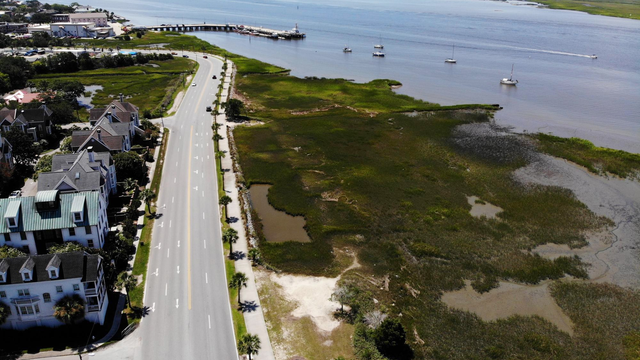Intensification Prompts a New Approach
From Charleston’s waters grows marshland, spartina and sweetgrass, Spanish moss, and live oak and palmetto trees. So has grown the city, becoming South Carolina’s largest by expanding over the terrain, and mostly taking a keep-the-water-out, single-purpose-infrastructure approach to its flooding issue. Creeks and neighborhoods have been filled in. Drainage systems have been constructed. Nonetheless, communities have continued to experience frequent flooding even as the city has worked steadfastly to manage it.
Making the issue more urgent is an increase in the city’s flooding. Inundation from king tides, which can happen during sunny days when no storm is around, occurred 38 times in 2015. That was triple the amount Charleston experienced in 2000. According to the National Oceanic and Atmospheric Administration (NOAA), the city’s sea level has risen 13 inches in the past 100 years – with half of the total occurring in the most recent 20 years. NOAA estimates that the sea level in Charleston will rise another 14 inches by 2050 and tidal flooding will affect the city 180 days a year by 2045.
Addressing the intensification, Charleston has been shifting its flood control and risk mitigation approach with the help of Black & Veatch. In 2015, the city established its Flooding and Sea Level Rise Strategy, focusing on reinvestment, responsiveness, and readiness – the “3 Rs of resilience.” In 2019, the strategy was updated to name critical targets. The Charleston Water Plan builds on the prior work, providing updated data and guidance to fully address the city’s flood issues.
The plan is built on the premise that flooding is manageable, and Charleston can continue to thrive, but the city must adapt to the rising water. It seeks to build long-term sustainability and resilience through an array of goals to improve the city’s water infrastructure and protect its citizens and neighborhoods, preserving both Charleston’s economic viability and its environmental resources.










